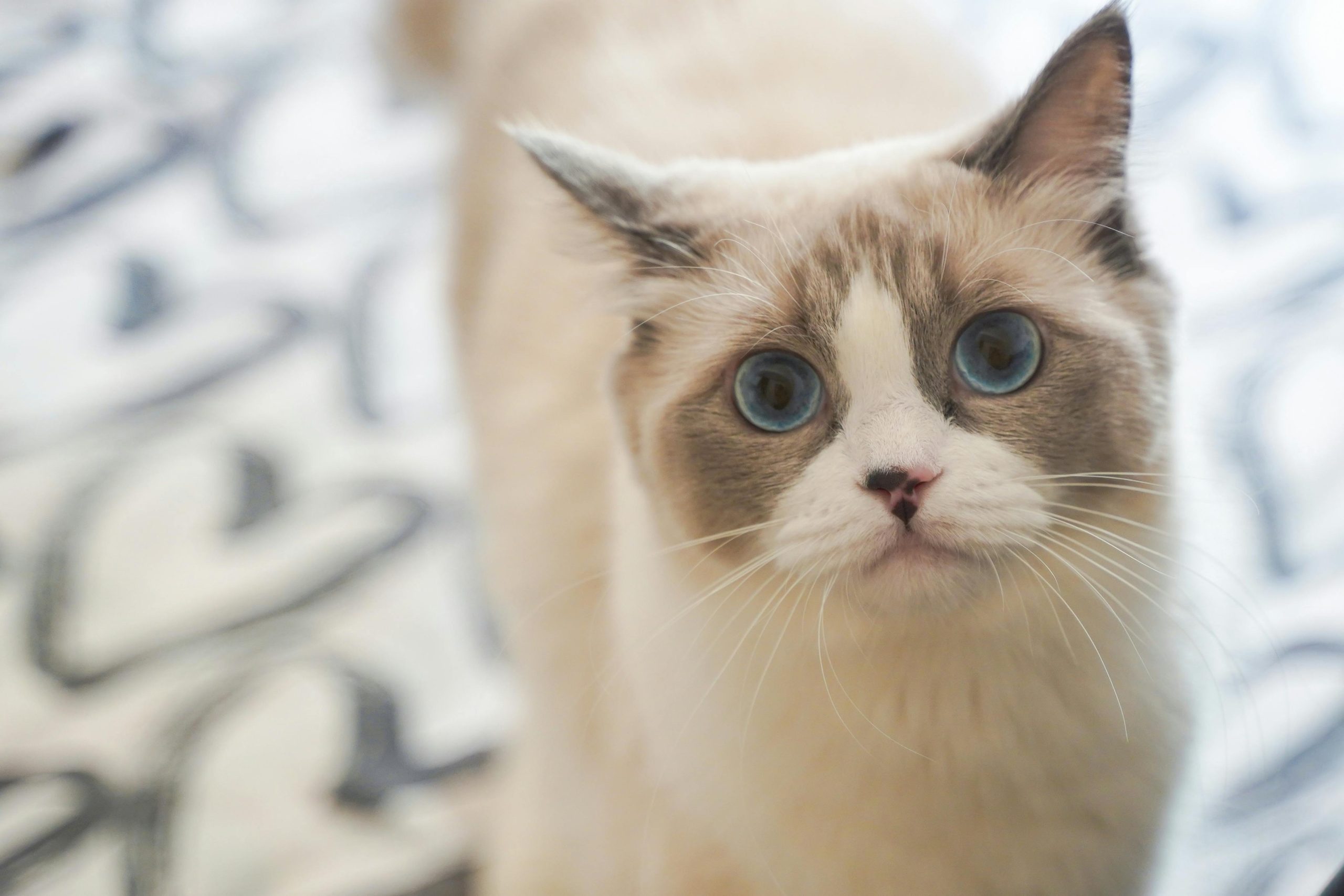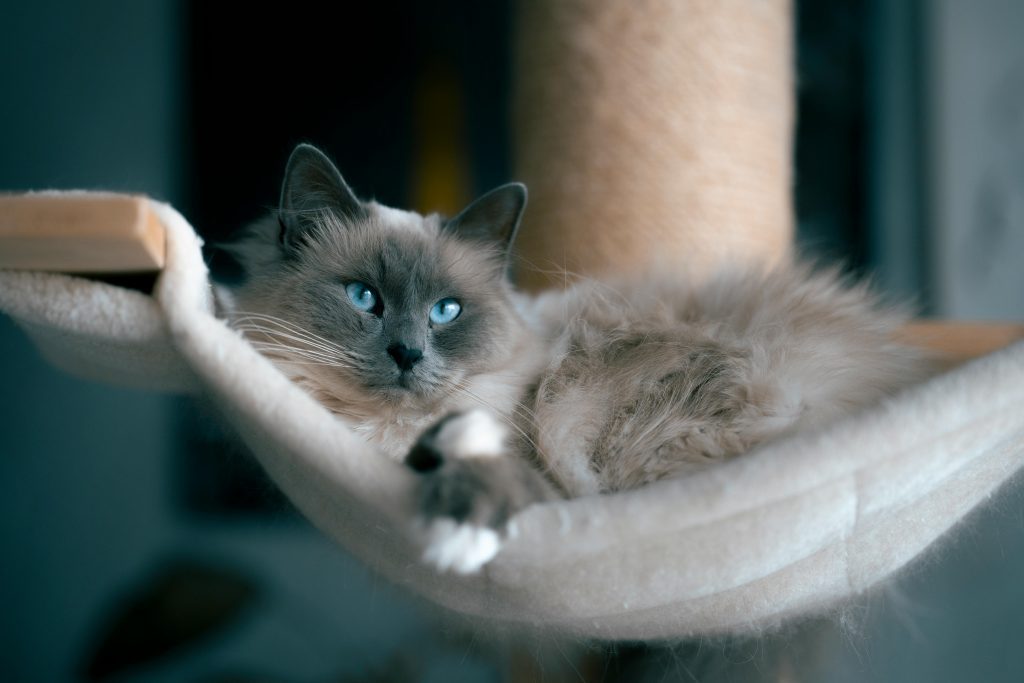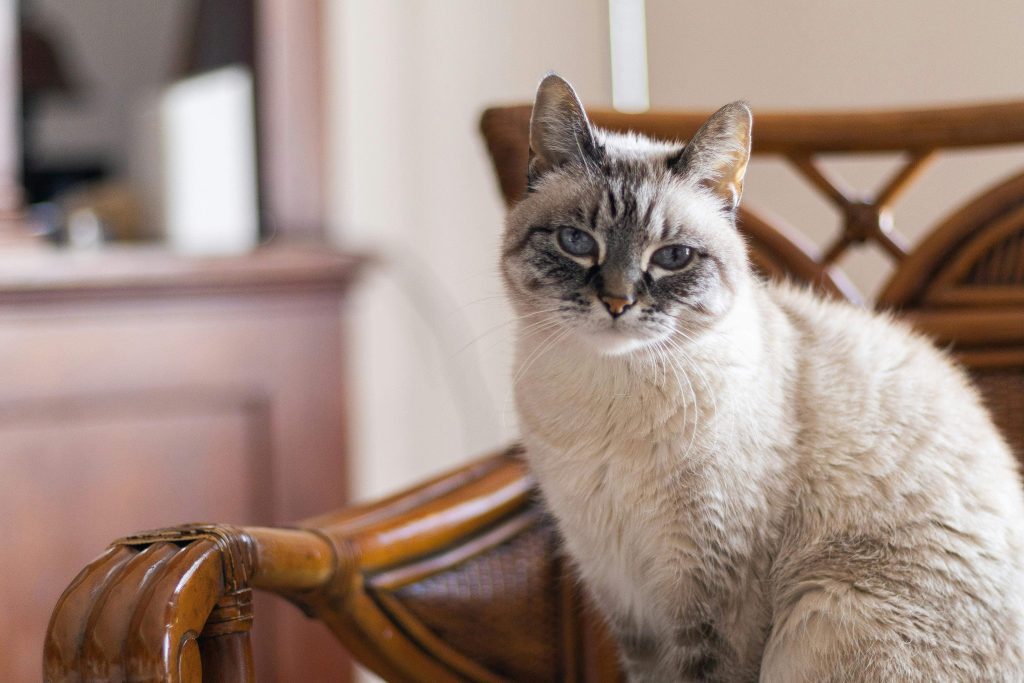Imagine a cat with velvety fur, deep blue eyes, and chocolate-toned features — meet the Chocolate Point Ragdoll. In 2025, this rare beauty is increasingly popular on Instagram and among some breeder circles, catching attention for its charm.
But what truly sets Chocolate Point Ragdolls apart from their Blue Point cousins? Beyond their striking looks, they’re known for a gentle temperament, social nature, and rising demand among families and seniors alike.
Whether you’re searching for Chocolate Ragdoll kittens for sale or comparing Blue Point Ragdoll vs Chocolate Point, here’s what I wish I’d known before bringing one home.
From grooming tips to breeder red flags, consider this your trusted companion in the Chocolate Point journey.
History and Genetics
Chocolate Point Ragdolls trace back to the 1960s, when breeder Ann Baker in California developed the Ragdoll breed from a white domestic longhair named Josephine. According to TICA breed histories, Josephine’s offspring were crossed with breeds such as Persians, Birmans, and Siamese to create a docile, floppy, affectionate companion.
Among the rarest color variations, Chocolate Ragdolls stand out due to their genetics: the chocolate color comes from a recessive TYRP1 (b) allele — a cat must be b/b to display it. Two carriers (B/b × B/b) can produce about 25% chocolate kittens, as explained by UC Davis Veterinary Genetics Laboratory.
The cs mutation (Himalayan) is a temperature-sensitive change affecting tyrosinase activity, so pigment forms only in cooler body areas, giving the creamy coat and warm brown points. DNA testing helps breeders confirm chocolate carriers and preserve accurate lineage.
Physical Characteristics
Chocolate Point Ragdolls are visually striking, with creamy ivory bodies contrasted by warm, milk-chocolate points on the ears, mask, paws, and tail.
Unlike seal points, their tone is softer and warmer—more latte than espresso—making them easy to spot when side-by-side. Their deep blue eyes, a Ragdoll hallmark, are worth noting against the aqua hues seen in mink varieties, which fall outside show standards (per TICA guidelines).
These gentle giants mature slowly, reaching full size and color by around 3–4 years. Kittens are born pale, and their points “fade in” over the first weeks—think of it like a slow sunrise—with color deepening over time and even shifting slightly with the seasons due to the temperature-sensitive Himalayan gene.
Temperament and Personality
Chocolate colorpoint Ragdolls are calm, affectionate companions who love being close to their people. Like all Ragdolls, they often “flop” in your arms, making them feel more like a plush toy than a pet.
While coat color doesn’t determine temperament, some breeders anecdotally note that certain Chocolate Point lines seem especially mellow and cuddly—true lap dwellers with a gentle edge.
Their soft-spoken nature and steady routines can suit families, remote workers, and even first-time cat owners. Genetics, early socialization, and meeting the parents are your best clues to a kitten’s future personality.
Chocolate Point Ragdoll Cat Types
Chocolate Ragdoll cats come in a range of breathtaking coat patterns, each paired with a unique body style, texture, and personality. From rich, warm points to rare tortoiseshell blends, understanding the physical build and appearance of each variation helps you choose the perfect companion for your home.
Chocolate Mitted Ragdoll
A broad, sturdy frame and plush coat set this variation apart, with white mittens, hind-leg boots, and a crisp white chin standing out against warm chocolate points. A thin white belly stripe adds refinement, and some carry a delicate blaze on the nose for extra charm.
This symmetry not only flatters the body’s structure but also makes the Chocolate Mitted Ragdoll a favorite among show enthusiasts. Lighter areas, especially on the paws and chest, need occasional extra care to keep them spotless.
You Might Also Like
Mitted Ragdoll Cat 2025 Guide – Features, Temperament, and Care Tips
Chocolate Bicolor Ragdoll
With a strong chest and balanced proportions, the Chocolate Bicolor makes an instant impression. An inverted white “V” frames the face, while the legs, chest, and underside are covered in clean white fur.
Chocolate coloring on the ears and tail adds depth and contrast, perfectly outlining the cat’s frame. This pattern is a top choice for the show ring, but its playful, outgoing nature also makes it a lively fit for busy households.
You Might Also Like
Chocolate Lynx Ragdoll
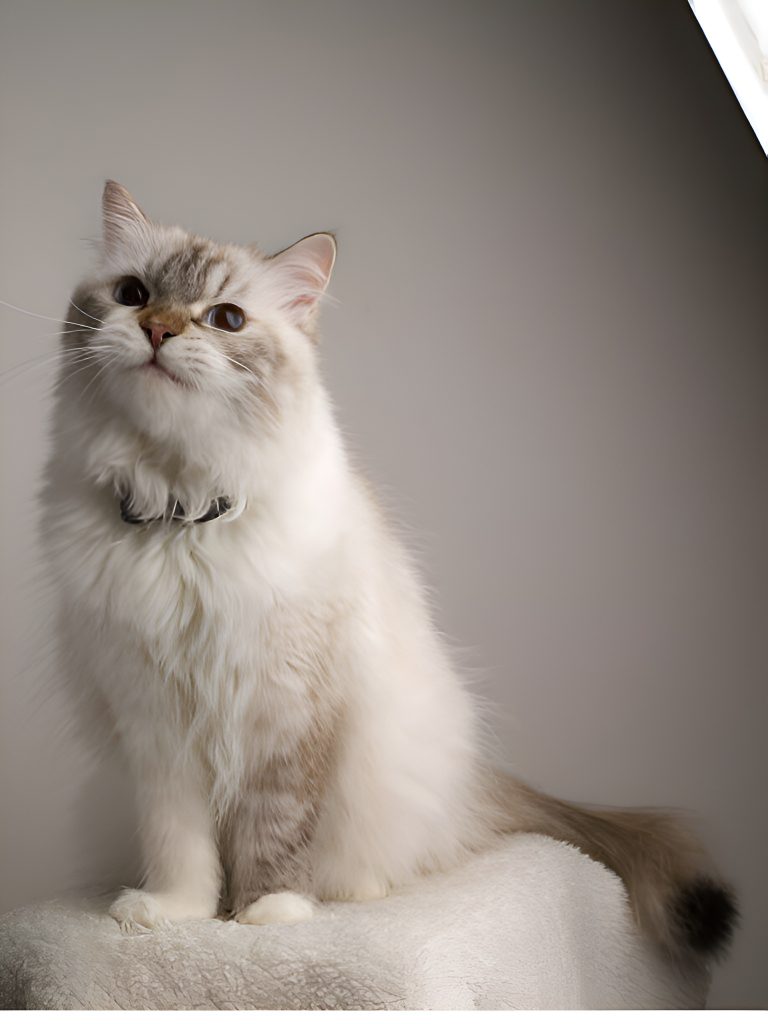
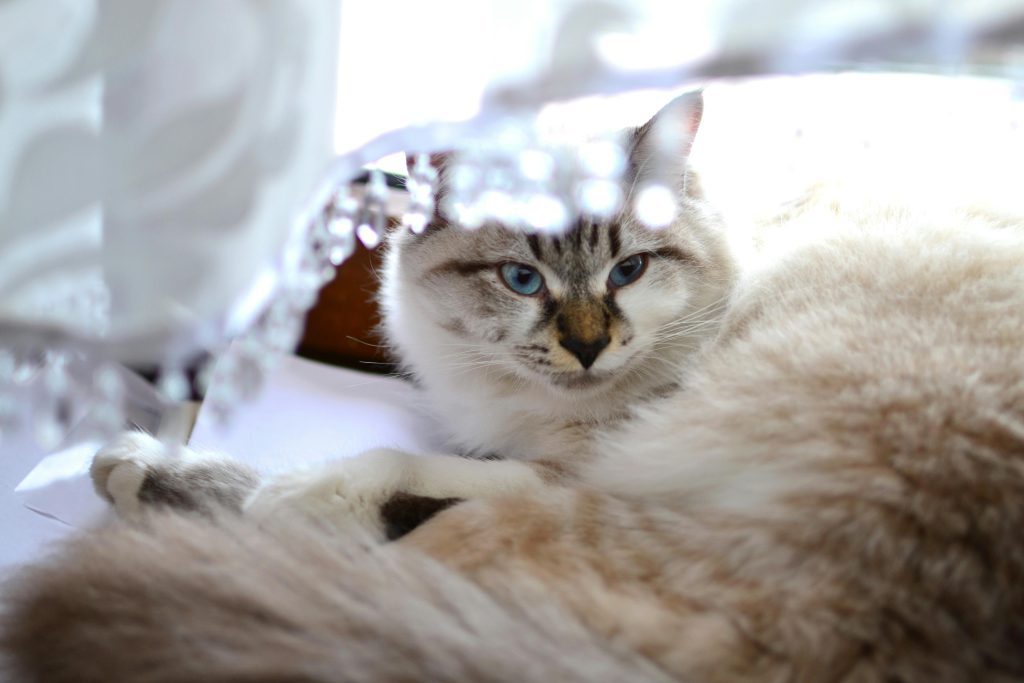
Striking striping over a warm chocolate base gives this variety a more exotic edge. A clearly defined “M” on the forehead, light leg bands, and a ringed tail complement its well-proportioned, medium-large body. Whether in point, mitted, or bicolor form, the pattern enhances the cat’s structure and draws extra attention to its vivid blue eyes.
The Chocolate Lynx is perfect for anyone wanting a wild-inspired look without losing the traditional Ragdoll body type.
You Might Also Like
Lynx Point (Tabby) Ragdoll Cats – Appearance, Genetics, & More
Chocolate Tortie Ragdoll
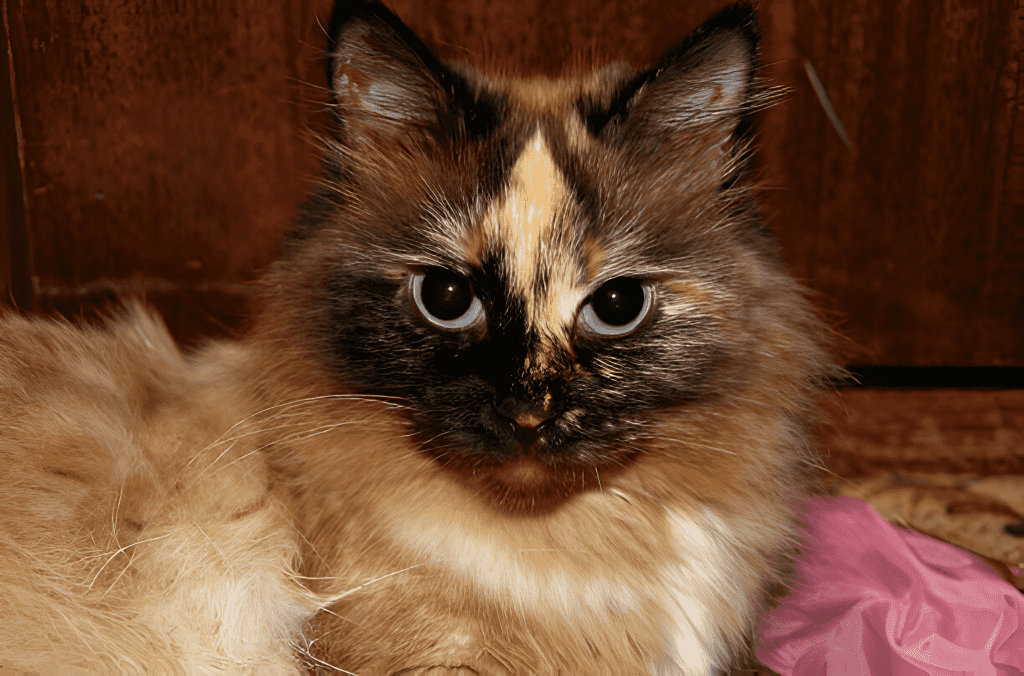
Only found in females, this variation mixes chocolate with bold orange or red patches that spill across a full, plush frame. Every Chocolate Tortie Ragdoll is unique, with no two coats sharing the same pattern. The warm, mottled tones play beautifully against their soft, dense fur, making them some of the most distinctive and unforgettable cats in the breed.
Rare Chocolate Ragdoll Variants
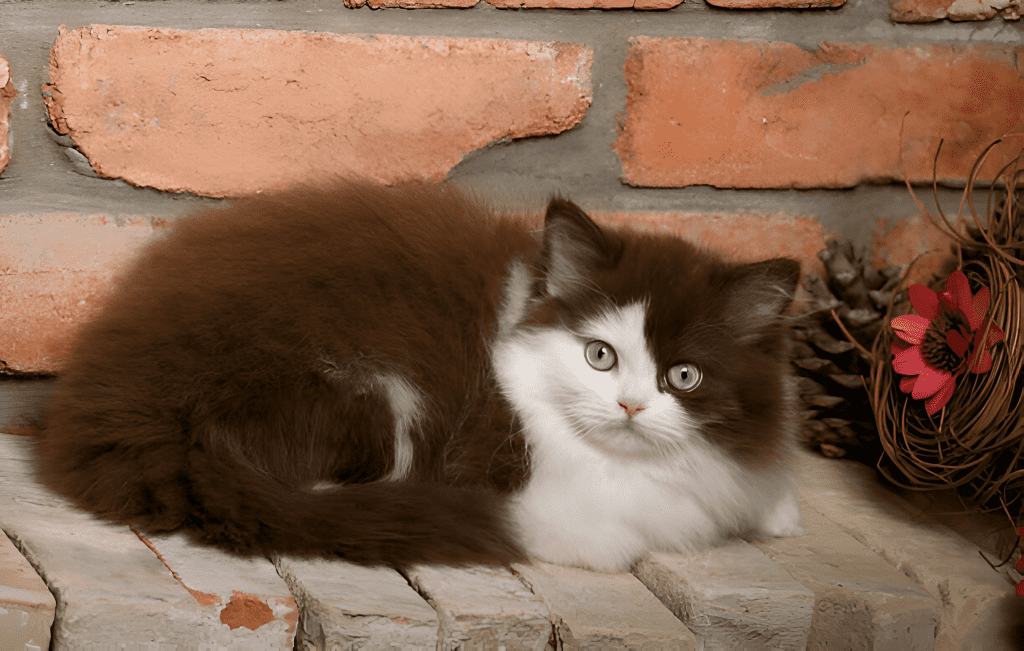
The Chocolate Mink Ragdoll has a rich, deep chocolate coat with a noticeably soft, plush texture and striking aqua eyes. These mink-coated cats likely trace back to Tonkinese lines and remain a point of debate in the Ragdoll community.
While traditional blue-eyed pointed Ragdolls are the recognized show standard, mink varieties aren’t currently eligible for championship in many registries, though they’re prized by those who love something a bit more exotic.
The Solid Chocolate Ragdoll has an all-over chocolate brown coat with no point contrast and typically green or gold eyes. This non-pointed look falls outside the traditional breed standard in many registries, making them “pet-only” in those circles — yet their Ragdoll temperament still wins hearts. Now that we’ve explored their different looks, let’s talk about what it takes to keep these beauties happy and healthy.
You Might Also Like
Mink Ragdoll Cat Guide – Patterns, Traits, Price & Care Tips
Grooming Needs
Chocolate Ragdolls have silky coats that resist matting, but brushing 2–3 times a week keeps shedding down and coat quality high. Use a wide-toothed comb for the undercoat and a slicker brush for loose fur.
During spring and fall, groom more often. Wipe eyes weekly with a damp cotton ball to prevent stains, especially visible on light fur. Brush their teeth 2–3 times per week with cat-safe toothpaste, and offer dental treats to support oral health. Grooming is also bonding time—start slow, reward with treats, and keep it positive.
Recommended Post
Nutrition & Diet
These cats are prone to weight gain, so a high-protein (35 %+), moderate-fat, low-carb diet is best. Mix wet and dry food to balance hydration and dental care. Feed two portioned meals daily—no free-feeding.
Track weight monthly: aim for 10–20 pounds depending on gender. Use puzzle feeders to slow eating and add mental stimulation. A protein-focused, portion-controlled plan keeps your Ragdoll fit and sleek.
Recommended Post
Exercise & Enrichment
Despite their laid-back nature, Chocolate Ragdolls need daily activity to prevent boredom and obesity. Play 15–20 minutes daily with wand toys, lasers, or puzzle feeders. Offer safe climbing options like window perches or low cat trees—stay close, as they prefer your company.
Provide sisal posts and flat scratchers to support natural behavior. Rotate toys weekly and place bird feeders near windows to stimulate curiosity. Daily engagement keeps them happy and mentally sharp.
Common Health Concerns
Chocolate coat Ragdolls are sturdy but can be prone to certain conditions. Hypertrophic Cardiomyopathy (HCM) is a genetic heart disease — a DNA test for the Ragdoll-associated MYBPC3 mutation is available (UC Davis VGL). Responsible breeders both test genetically and schedule periodic echocardiograms, starting around 1 year old, per veterinary cardiology guidance. Watch for signs like fatigue, labored breathing, or weight loss.
Hairballs are common — help prevent them with regular brushing and hairball-control diets. For urinary issues, encourage hydration (water fountains help) and monitor litter box habits. Maintain a healthy weight with monthly weigh-ins to reduce the risks of arthritis, diabetes, and liver disease.
Recommended Post
Where to Find a Healthy Chocolate Ragdoll
Finding a healthy Ragdoll with chocolate points starts with choosing the right source. Reputable breeders are TICA or CFA registered, provide proof of HCM genetic testing, and share recent health records for both parents.
Ask for a live video call to meet the kittens and parents, see their environment, and request a copy of the contract and pedigree. A good breeder will answer questions openly and never rely on stock photos. Avoid sellers with multiple litters at once or those unwilling to show vet records.
You can search on GoKitty.com, Petfinder, or CFA/TICA breeder directories—just verify the cattery’s registration number. Cat shows are also a great place to meet breeders and see kittens in person.
You Might Also Like
FAQs
Are Chocolate Point Ragdoll cats rare?
Yes, Chocolate Point Ragdolls are considered rare. The chocolate gene is recessive, meaning both parents must carry it to produce these kittens. As a result, seal points are more commonly found in litters.
How much do Chocolate Point Ragdoll kittens cost in 2025?
Expect to pay between $1,200 and $2,500, depending on factors like breeder reputation, kitten quality, and location. Prices may increase if you’re purchasing from Champion Bloodlines.
You Might Also Like
How Much Does a Ragdoll Cat Cost in 2025? Full Price Guide
Do Chocolate Point Ragdolls always have blue eyes?
Yes, blue eyes are a breed standard for all Ragdolls. If a chocolate point has eyes of another color, it may not be a purebred Ragdoll.
Recommended Post
How Much Does a Ragdoll Cat Cost in 2025? Full Price Guide
Are Chocolate Point Ragdolls more affectionate than other Ragdolls?
No, their temperament is not determined by coat color. However, the gentle and affectionate nature of Chocolate Points may make them appear especially sweet.
Can Chocolate Point Ragdolls live in hot climates?
Yes, but they may appear lighter in color due to their temperature-sensitive fur. Keep them well-hydrated and ensure they have shade and proper ventilation.
Final Thoughts
Choosing a chocolate-colored Ragdoll means welcoming a gentle, affectionate companion into your life. Their striking looks and laid-back loyalty make them ideal for calm households.
They do need commitment—regular grooming, daily interaction, and a home where they’re not left alone for long. If you’re ready for one, try these three steps before calling a breeder: decide on pattern and quality, draw up your breeder checklist, and book a vet visit within 48 hours of pickup.
That’s why I love these cats—they have a way of turning strangers into lapmates. —Pavel

Hi, I’m Abir Ahamed—a writer, editor, and proud cat lover with a passion for feline welfare. I use my words to educate, inspire, and advocate for responsible pet care. Based in Bangladesh, I bring a unique perspective to Cats Question, hoping to help cat lovers make informed, compassionate choices.
